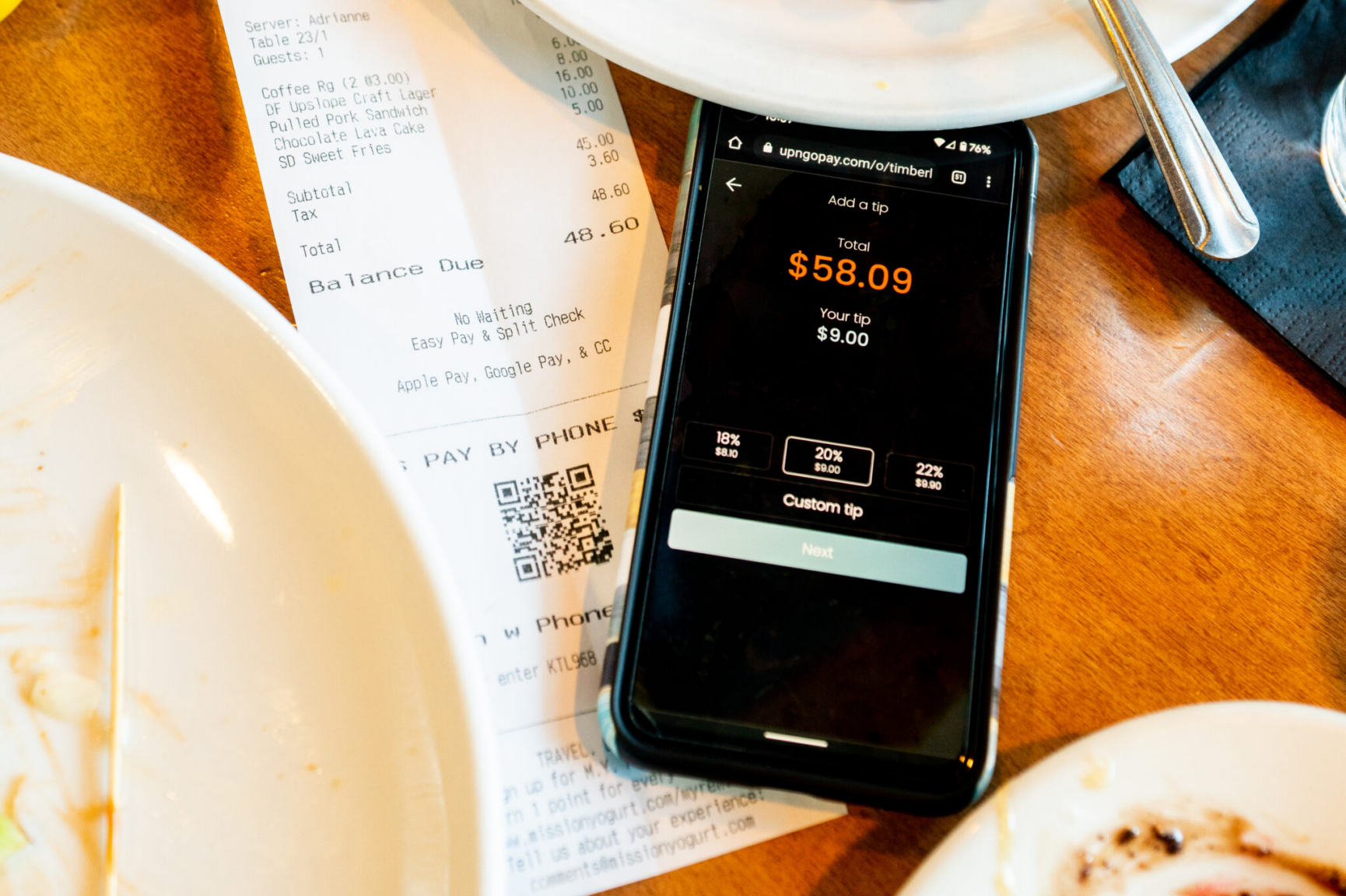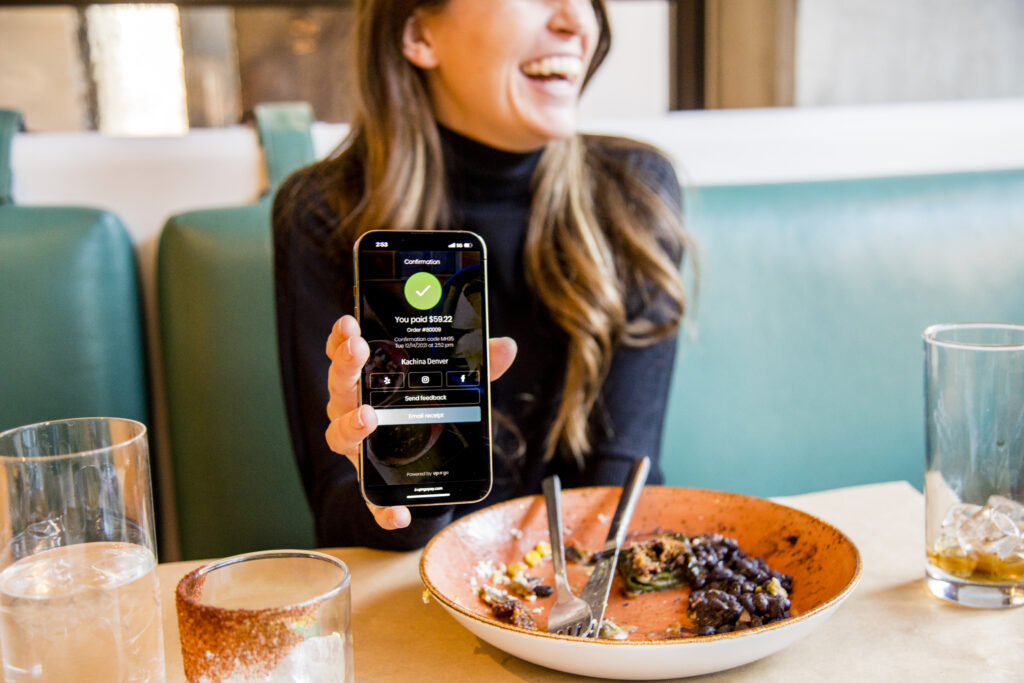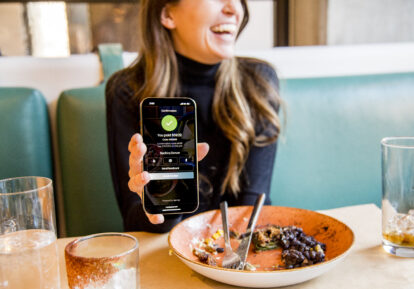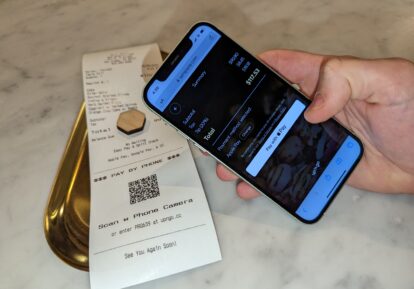
3 Unexpected Benefits of Pay at the Table
Restaurant operators who understand the value of saving their staff time continue to implement pay at the table solutions in their restaurants. When guests pay at the table, especially using their phones, not only does it save staff time and increase guest convenience, but it brings restaurants dramatic top-line benefits. Pay at the table lets restaurants sell more food and drink, serve more covers on any given day, and even collect reservations for future visits.
Pay at the table can come in the form of a server taking a handheld device to a table to collect payment. While that saves time compared to a server going back-and-forth to swipe credit cards or dip chip cards at a POS terminal, it still burns unnecessary staff time. With a handheld solution, a server still has to stand at the table and babysit the payment.
To maximize the benefit of pay at the table, you want guests to pay at the table on their own, without staff present. The most cost-effective way to do this, without any hardware purchases or deployments required, is with QR code payments at the table.
Let’s look at three unexpected benefits of pay at the table for restaurants, especially when guests can pay contactlessly from their own phones:
Sell more food and drink
How can collecting payment help you sell more? It’s easy. When your server is swiping or dipping credit cards at a POS terminal, even if they’re doing it on a handheld device at the table, that’s time they could be spending elsewhere. If your server isn’t busy swiping credit cards at a table, they could be at another table selling a different party another round of drinks, more appetizers, or desert. Your severs’ time delivers much more ROI when they’re selling than when they’re collecting payment.
Your servers’ time should be spent making sales and making sure guests get their food before getting hangry, not collecting payment like a cashier. A server’s focus should be sales and customer service, not accounts receivable.
Serve more covers
How can you serve more covers with pay at the table? Your restaurant is only open for a limited number of hours any given day. With pay at the table, guests pay much sooner, which means they leave tables much sooner, too.
We’ve seen a big range in how much sooner guests leave a table when paying by QR code. On the low-end, we’ve seen restaurants average guests leaving tables about 6 minutes sooner than paying with a server. On the high-end, particularly busy breakfast restaurants, we’ve seen averages of guests paying and leaving tables 15 or more minutes sooner.
Let’s look at a simple example: If your restaurant is open three hours for breakfast service and you can reduce a 60-minute visit to 45 minutes, then each of your tables can serve four parties in three hours, instead of only three parties in three hours. So if guests can pay 15 minutes sooner, you can handle 33% more seatings! That’s right, a 25% time reduction equates to a 33% capacity increase.
Every extra seating is more profitable than the one before. With extra seatings of a table in the same amount of time, your rent isn’t changing, your utility bills aren’t going up, and your labor time isn’t increasing. You’re just seating additional parties per table.
If you have twenty tables and each seats an extra party of two a day thanks to pay at the table, you can serve 40 extra covers per day. If every cover spends an average of $20, that’s an extra $800 a day in revenue! That’s about $300,000 in extra revenue per year in one restaurant.
When a guest pays by phone at the table, it isn’t your last touch of that dining experience, it’s your first touch with their next visit to your restaurant!

Get more reservations
QR code pay at the table can get you reservations, unlike hardware-based pay at the table. This is because QR codes get you real estate on your guests’ phones! This is one of many ways that QR codes have a big advantage over pay at the table devices.
When you use QR codes for pay at the table, guests scan a QR code and then use their own phone to pay. Unless you’re committing the crime of forcing guests to pay with an app, your guests are going to load their check in their phone’s web browser. QR code payments load a webpage on guests’ phones that’s dedicated to your restaurant brand! Once restaurant guests complete payment on their phone, you still have their attention.
That’s when you swoop in with a “Reserve your next visit” link! As soon as a guest finishes paying by phone, right on the payment confirmation screen, you have a big marketing opportunity. Not only can you put reservation links, but you can put links to sign up for your restaurant loyalty program, links to buy your restaurant gift cards, links to guest surveys, links to follow your restaurant on social, and more. The options are unlimited.
When a guest pays by phone at the table, I like to say that payment isn’t your last touch with a guest’s dining experience, but it’s your first touch with their next visit to your restaurant!
Conclusion
Pay at the table delivers a lot of financial benefit to your restaurant. With the right pay at the table solution, your restaurant can sell more food and drink, serve more covers, and get more reservations.
A QR code-based pay at the table solution, as opposed to a tablet or other hardware-based pay at the table solution, earns your restaurant brand valuable real estate and attention on guests’ phones. This valuable advantage of QR codes over hardware gives restaurants numerous marketing inroads to guests – not just reservations, but loyalty signups, survey collection, gift card sales, and more.
No matter which pay at the table solution you pick for your restaurant, it’ll provide big advantages compared taking credit cards the old-fashioned way. Some restaurant operators mistakenly think they’re giving guests “more personalized service” when the server takes their credit card out of their sight for ten minutes. It’s not better service to be kidnapped at a table when you want to pay and leave.
“Service” is giving guests the power to get up and go when they’re ready. We’ve facilitated over 11 million payments at the table so far, and anytime we’ve measured guest satisfaction with our pay at the table solution, it’s always been immensely high.

